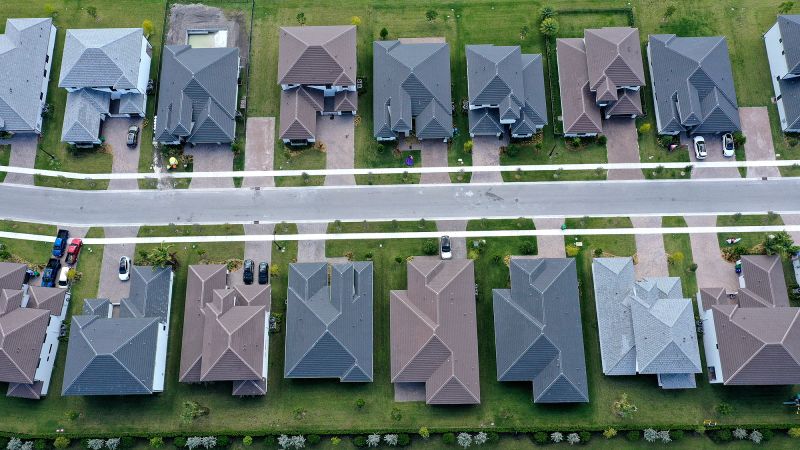Buying a family-sized home with three or more bedrooms used to be manageable for young people with children. But with home prices climbing faster than wages, mortgage rates still close to 23-year highs and a shortage of homes nationwide, many Millennials with kids can’t afford it. And Gen Z adults with kids? Even harder.
Meanwhile, Baby Boomers are staying in their larger homes for longer, preferring to age in place and stay active in a neighborhood that’s familiar to them. And even if they sold, where would they go? There is a shortage of smaller homes in those neighborhoods.
As a result, empty-nest Baby Boomers own 28% of large homes — and Milliennials with kids own just 14%, according to a Redfin analysis released Tuesday. Gen Z families own just 0.3% of homes with three bedrooms or more.



Sadly, many can’t move. Retirement homes/communities are sometimes more expensive. Smaller homes cost more or have HOA fees they can’t make work. Most all options have taxes they also can’t make work.
I wish it were as easy as telling them to move but it’s not.
Also, even if it were that easy, it’s kind of hard to expect someone to leave their home for the greater good. Looking at it from the perspective of society at large it makes logical sense and frames the empty nester as selfish, but when it comes down to the individuals it’s kind of hard to blame them, it’s their home and they love it and they chose it, why should they choose something else?
In general, large scale, difficult, costly changes done for social good are hard to get off the ground when they rely on large numbers of people choosing to make them and solely for the social good without any other natural motivations.
It’s pretty insane that America has virtually no supply of inexpensive small homes. It’s all about the 2500+ sq-ft behemoths that cost $400,000+.
Even though it’s a “worse” deal per sqft I think the market for sub $200,000 homes in the 500-750 sq-ft range would be absolutely booming if it existed.
Missing middle housing would be an even better solution (duplexes, quadraplexes, row houses, and small apartment buildings). Single family houses are an incredibly inefficient use of space and naturally cause greater sprawl, which means more cars and more roads (and consequently more emissions).
Trust me, I completely agree. I just have very low expectations of the American market and the American consumer. I figured that lots half as wide and half as deep could fit 4 times the number of “tiny” homes in the same area and it might entice many people who want a single family home to something more land efficient rather than a 2500sq-ft place.
I used to live in an apartment complex that had a number of buildings and each building had 6 apartments. I really liked it. One of the best places I ever lived, but unfortunately the management company decided that they need to constantly raise the rent. They ended up forcing a lot of people out.